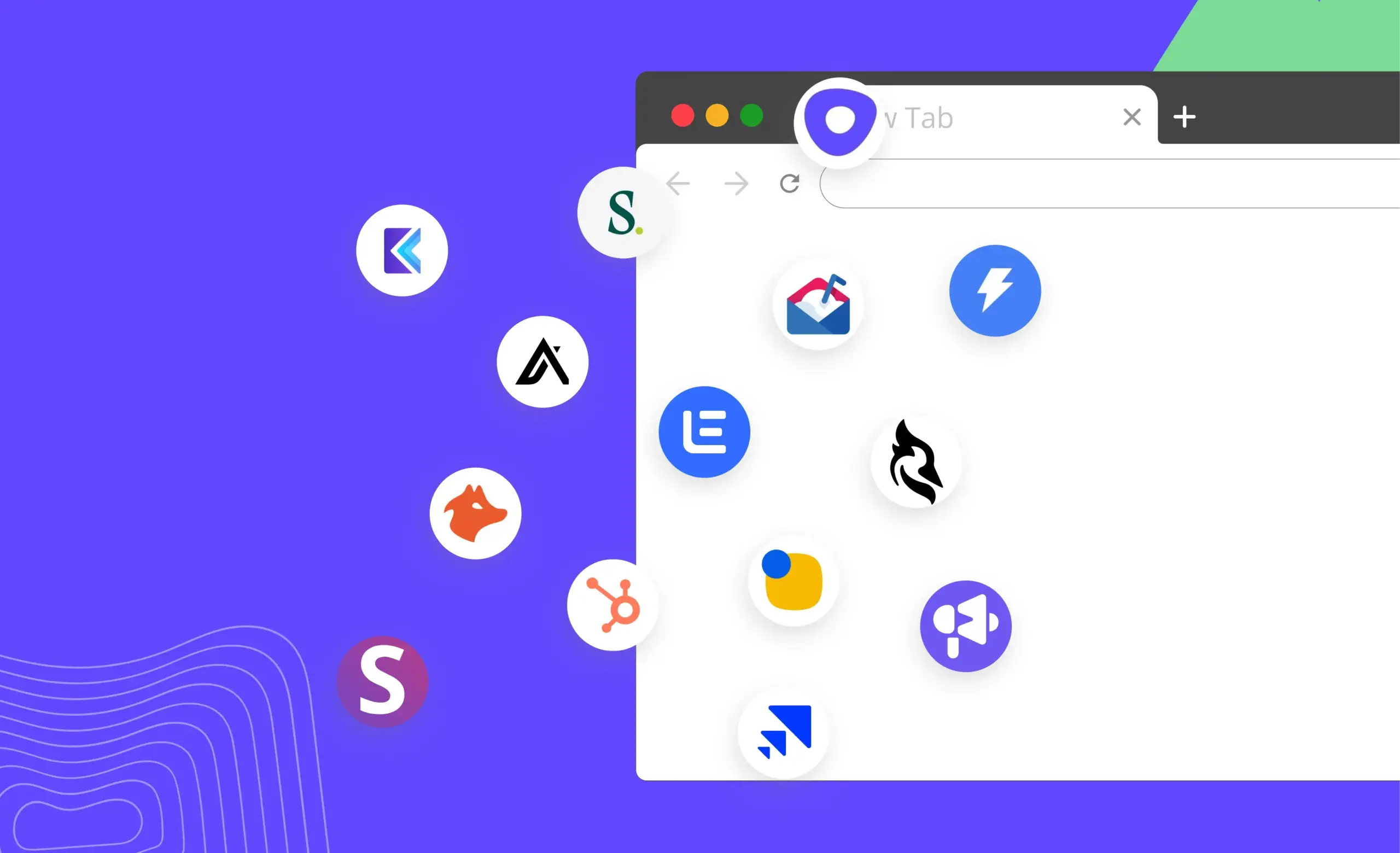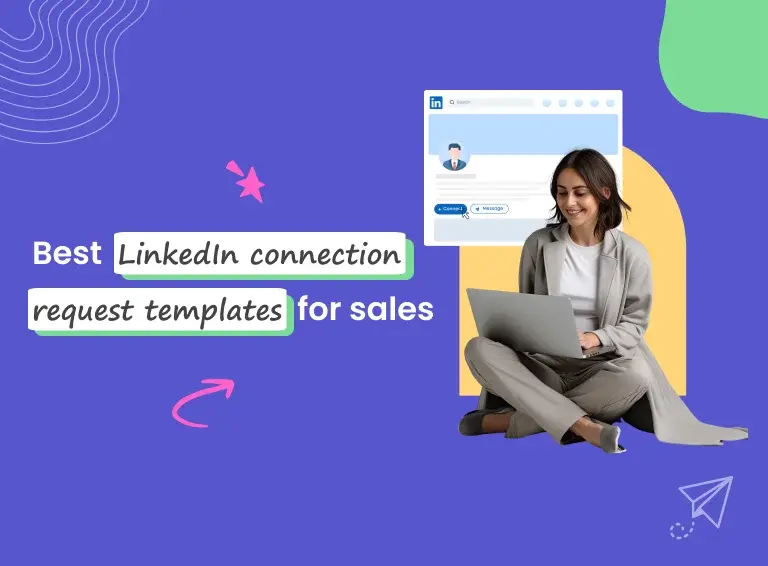The stakes are high. And it is important to get this one right.
Does your sales team really need a sales engagement platform? And how exactly do you go about picking one?
You may be a techno laggard and prefer to run your entire sales team with just a CRM. Or maybe you are a team of early adopters who like to experiment with an array of shiny new toys for your sales team.
Irrespective of which side of the tech divide you fall in, there is an undeniable, tectonic shift underway in the way customers buy and that has implications on how your sales team operates.
Prospects are increasingly wary of being sold to. At the same time, they are being inundated with emails and calls and LinkedIn messages from a multitude of sellers.
The end result: it is increasingly tougher to get prospects to engage in a meaningful fashion with your sales team.
As sellers, we need to evolve from generic messaging to personalization at scale. We need to shift focus from aggressive closing tactics to authentic engagement tactics. And we need to do this without pushing the sales team's efficiency off a cliff.
That is the structural tension facing every sales team today. Achieve authentic engagement with prospects, and at the same time increase sales team efficiency.
Getting this right implies embracing sales engagement as a critical component for your sales strategy and investing in an appropriate platform for your team.
And that is what we cover in the rest of this post.
Why Is There a Need To Have a Sales Engagement Process?
Talk to any Sales Manager today and you’ll find that most sales organizations are grappling with one or more of these seven pain-points.
1. Manual, Repetitive Sales Work Taking a Rep’s Time off Selling
A large part of your sales reps day goes into tasks that don’t really contribute to closing deals - like sending emails, making calls, following-up or keeping the CRM updated.
Most of these activities hardly require any strategic work - they’re plain repetitive and tedious - and detract you from selling.
"This calls in for the need to automate the monotonous tasks giving you the space to focus on building relationships".
Letting you work on things that matter.
2. Need for Personalization at Scale
One of the most commonly faced challenges by sales teams is to balance the scale of outreach with personalization.
Your buyers expect personalization. It shows them that you’ve put enough thought about who they are, what interests them and what they want. It immensely increases your chances of hearing back from them.
But at the same time, as a seller, you’d want consistently scale your outreach to a large number of prospects.
This is the constant tug of war that many sales teams struggle with.
"Should you settle for a lower level of personalization while reaching out to prospects in bulk? Or should you aim to personalize every email you send to prospects?"
Or is there a way to do both?
3. The Proliferation of Sales Tools Leading to Data Silos
There is an overwhelming array of specialized tools available for sales reps
Most sales organizations have equipped their sales teams with multiple tools to support their selling activities and enhance productivity.
One tool to make calls. Another to schedule appointments. Another for following-up. And another to track email opens.
These tools, instead of complementing each other to bring efficiency, end up operating independently leaving you toggling between them.
"This also leads to a lot of data stuck in different silos making it difficult to get a complete picture in one location".
Having a platform that integrates multiple sales systems and supports your activities is a better way forward.
4. Missing Out on Crucial Data That Drives Business Decisions
With the rise of inside sales, sales reps mostly reach out to their buyers through emails and calls today and have very little in-person face to face interaction.
This makes it difficult to understand the prospect’s body language, level of interest and engagement.
Lacking this crucial data of prospect engagement makes your sales process intuition-driven, not data-driven
As a substitute for this in-person feedback, you can track engagement metrics such as opens, clicks, unsubscriptions, etc.
"Having this specific, relevant data helps you get a pulse of customer intent and make informed decisions about prioritization".
5. Need for Omnichannel, Multi-Touch Campaigns
Today, there are more communication channels to engage with a prospect than ever before such as phone calls, emails, SMS/texts, direct mail, social media, etc.
And different potential buyers prefer to engage through different channels.
One prospect might prefer to respond to emails. Another might engage with your social media content. While others prefer to speak over a call.
"Your sales reps should be able to leverage the channel that works best for your prospects".
Often it takes more than one channel to attract your prospects’ attention.
This demands for a system in place where you can leverage a combination of communication channels such as videos, SMS/texts, social media, direct mail, etc along with emails and calls to effectively reach your prospects.
6. Need for a Scalable, Repeatable Process in Place AKA Sales Playbook
Sales teams need to reduce every bit of friction that prevents quota attainment. New rep onboarding/ramp time of new reps is often a major bottleneck in growing sales teams.
The entire process of onboarding new reps and getting them to contribute to revenue-generation is critical and can affect the quota attainment of the organization.
"Having a scalable and repeatable system in place, that can be easily replicated, significantly reduces the rep ramp time and quickly converts them into fully productive reps".
This also prevents each sales rep from having to reinvent the wheel and helps adopt best sales practices.
7. CRM by Itself Cannot Drive Customer Engagement
CRM is fundamentally a system of record for customer data and operational tasks - it’s a storehouse of all the information that a sales team will need, provides a great context to new reps and is the logbook of all customer interactions.
But a CRM by itself cannot sufficiently drive lead/customer engagement. When used as a standalone tool, "a CRM doesn’t help sales teams close more deals rather aggravates their situation by forcing them to complete more administrative tasks".
This immensely hampers a sales rep’s productivity.
As a result, there is a need for a communication/automation layer on top of the CRM.
As a sales manager, what do you think is the solution?
How do you get your reps to do more in spite of them facing these pain-points?
How will you direct their focus onto meaningful, revenue-generating activities?
How can you get the entire team to hit quotas and get more done in less time?
Sales Engagement is the answer.
What Is Sales Engagement?
It is fast emerging as a category in response to the pain-points and challenges faced by sales teams.
Sales Engagement can be defined as the interactions and exchanges between the seller and prospects. It is understanding the buyer’s needs and preferences in order to best support them.
It is ensuring that you are helpful and providing value to the buyer at the right time.
A well-designed sales engagement strategy helps you reach out to potential buyers at the right time, through the right communication channel with the right content.
This exponentially increases the chances of your prospect paying attention, engaging with your message and eventually turning into a paying customer.
Sales Engagement Platforms are the tools that help you facilitate this strategy.
A Sales Engagement platform helps sales teams to efficiently deliver high-quality interactions with prospects and customers at scale.
By automating the mechanical/repetitive parts of your sales funnel like running outreach campaigns, following up, tracking engagement metrics, etc, a Sales Engagement platform helps you focus more on meaningful activities such as building relationships, finding solutions, negotiating commercial terms and closing deals.
Key Benefits of a Sales Engagement Platform
1. Engaging Prospects With Personalized, Multiple-Touches at Scale
Sales Engagement technology enables you to launch outreach campaigns at scale while concurrently improving the authenticity of each customer touchpoint.
It allows you to set-up intelligent and automated follow-up sequences that drive better engagement.
A Sales Engagement platform offers multiple personalization features that help you personalize every interaction with the prospect.
This way, a Sales Engagement platform helps the sales teams solve the trade-off between volume and personalization.
2. All the Disparate Tools Are Integrated Into a Single Platform
A Sales Engagement Platform cohesively connects the data existing in silos across the different platforms of the organization’s tech stack into a single experience.
It integrates with CRM and is often a combination of content management systems, email systems, voice, SMS/texts, etc to help sellers automate communications, outreach and selling activities.
With this tight integration, it helps you choose the best sales and marketing materials to nurture your leads without toggling between content management platforms.
This way, sales reps have all of their engagement needs, customer and business insights, communications execution and activity prioritization in one solution.
A Sales Engagement platform can thus improve efficiency, save time and help shift your focus to closing more deals.
3. Automate CRM Updation
Keeping the CRM up to date with important data is a critical requirement of any sales organization.
A Sales Engagement platform helps in keeping your CRM up-to-date without having to enter data manually.
A Sales Engagement Platform seamlessly integrates with your CRM and automatically syncs all the data such as customer interactions, email opens, clicks, bounces, unsubscriptions, etc in real-time, thereby eliminating manual data entry.
This way, the CRM always stays fresh and updated with high-quality data which can, in turn, improve the efficiency of your entire organization.
4. Use Metrics and Data Analytics To Drive Sales Outcomes
A Sales Engagement platform brings the full power of data, metrics, and experimentation into your sales process thereby improving the overall effectiveness of your sales organization.
Email engagement metrics provide insights to identify your more valuable leads and not waste time on the ones who are not ready to engage yet. This will help you make informed decisions on messaging and timing of your outreach.
Using data-driven techniques like A/B testing, a Sales Engagement platform helps you iterate, improve your message and communicate with leads more effectively.
5. Provide Sales Managers With Reporting and Dashboards to Coach Deals Forward
A Sales Engagement platform provides detailed reports on the work done by your sales reps on a day-to-day basis such as the number of emails sent, calls made, deals negotiated, etc.
This provides you with all the data required to analyze the performance of your sales reps, understand the areas of improvement and refocus your teams’ efforts accordingly.
6. A Sales Engagement Platform Makes Your CRM More Powerful
A Sales Engagement platform in combination with a CRM gives your sales teams a strong toolkit.
The CRM serves as a central repository/source of truth for all customer interactions.
The Sales Engagement platform acts as the communication layer on top of the CRM built to make your reps more productive.
How Do You Pick the Right Sales Engagement Platform
The key to realizing the benefits of a good Sales Engagement platform is picking one which best suits your sales goals, maturity, and team size.
Given the availability of multiple sales engagement tools to choose from, how do you pick a tool that will actually help - rather than simply bolting on another solution?
Here’s a quick guide to help you evaluate and pick through the questions to ask for, before making a choice:
a) Tight Integration With Your CRM
A CRM and the Sales Engagement Platform form the two foundational pillars of any sales team’s tech stack.
Therefore, it is important to ensure that they are highly compatible - they’re built keeping each other’s constraints and design philosophy in mind.
Choosing a Sales Engagement platform that has native integration - as against a third-party integration - with the CRM facilitates seamless data sync in real-time.
b) Excellent Features for Your Preferred Communication Channel
Despite using multiple communication channels to engage with prospects, every sales team has certain channels that form the backbone of their sales outreach.
This channel solely depends on your prospects - their preferred channel of engagement - and can vary from anything between emails and phone calls to LinkedIn.
While choosing a Sales Engagement platform, it’s important to make sure that your tool has robust features around this particular communication channel.
For example, if the email is your central channel of engagement, then look for tools that maximize the deliverability.
c) Should Support Your Sales Strategy Well
Different sales organizations have different strategies.
Some organizations follow a high volume approach with little personalization.
Others might want to be highly targeted and deeply personalize every interaction with the prospects.
Some teams might follow on account based prospecting strategy where the focus is on high-value accounts. While others might follow prospect based prospecting where only buyers with a specific persona are approached.
Understand where your sales strategy stands on this entire spectrum and choose a platform that best supports your strategy.
Irrespective of your sales approach, always ensure that the tool that best supports your program.
d) Should Match With Your Sales Organization’s Maturity
If you’re a small organization that’s just getting started, you’re better off working with a self-serve, easy to use, a light-weight tool that’s easy to learn and use.
On the other hand, if you’re a large organization with Salesforce admins, sales ops, etc, then you might want to choose an enterprise-grade tool that supports restrictions, single sign-on, security, workflow restrictions, role-based permissions, etc.
Simply put, always choose a tool that works well with your organization’s maturity for maximum effectiveness.
Conclusion
The changing B2B sales landscape demands that sales leaders re-evaluate their strategic priorities.
Does your current toolkit provide you the ability to:
1. Personalize each interaction with your prospects
2 Improve the efficiency of your sales reps by automating followups and tasks
3. Maintain clean and up to date customer records
A CRM is a great place to start for your sales tech stack, but to really transform your sales team into a revenue-generating machine, the CRM in combination with the right Sales Engagement platform can be a game-changer!





